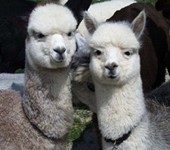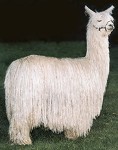 Alpacas, llamas, guanacos and vicunas are all members of the camelid family, and originate in Central and South America. As the family name suggests, they are related to camels. Let's find out more about the alpaca! There are two types of alpacas:
 The alpaca is similar in shape to the llama, but it is smaller, and has a finer fleece. The average alpaca weighs about 70 kilograms, and is about 1.5 metres tall at the head. They are gentle animals, and usually enjoy being around humans. The alpaca is similar in shape to the llama, but it is smaller, and has a finer fleece. The average alpaca weighs about 70 kilograms, and is about 1.5 metres tall at the head. They are gentle animals, and usually enjoy being around humans.
Alpacas produce one of the world's most luxurious natural fibres. An alpaca's fleece is clipped much like wool is clipped from a sheep, causing the animal no harm. Alpaca fibres are as soft as cashmere, and they are warmer, lighter and stronger than wool. Alpaca fleeces also come in more colours than any other fiber-producing animal ... about 22 in all. Alpacas have been domesticated for more than 5,000 years. Alpacas were kept by the ancient Incan civilization located in the high plateau region of the Andes Mountains of South America. Their fibres were woven into colourful clothing that, along with the alpaca itself, played a central role in Incan culture.  Alpacas were first imported to the United States in the early 1980's; they are now being raised in many places around the world. However, outside of their native South America, the number of alpacas found in other countries is small. Almost 99 percent of the world's approximately three million alpacas are found in Peru, Bolivia, and Chile.
Alpacas were first imported to the United States in the early 1980's; they are now being raised in many places around the world. However, outside of their native South America, the number of alpacas found in other countries is small. Almost 99 percent of the world's approximately three million alpacas are found in Peru, Bolivia, and Chile.
The lifespan of an alpaca is about 20 years. Almost all are registered; alapca bloodlines are kept track of rigorously. Alpacas eat grass, and chew cud like cows. Alpacas do less damage than most other farm animals since they have pads, not hooves. They graze gently, allowing the grass in the pasture to regrow more quickly. Their dung makes excellent fertilizer, and unlike cows it is conveniently dropped in areas where the animals avoid grazing. 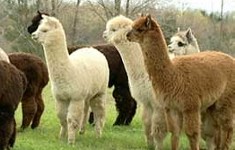 Alpaca fibre is very special. It is soft and warm, and even though it is very light, it is also strong, which means it feels nice next to your skin, but clothing made from it will last a long time. Alpaca fibre is very special. It is soft and warm, and even though it is very light, it is also strong, which means it feels nice next to your skin, but clothing made from it will last a long time. Alpaca fibre comes in a beautiful range of natural colours - white, silver, all shades of grey and fawn, chocolate brown and jet black. Alpaca fibre also dyes well. A single alpaca produces enough fleece each year to create several soft, warm sweaters.  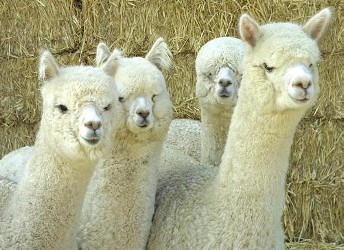 BozeDown Alpacas in England is special for another reason. A former student of Worsley School, Mary-Jo (MacDonald) Smith, is the owner/manager of this alpaca farm. In addition, my daughter Jesse, also a former WCS student, has worked there. 
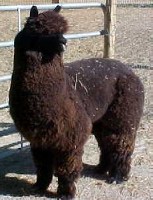
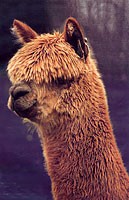 Jesse told us all about her experiences with alpacas, and we have some more information for you. Apparently alpacas, like camels, like to spit. A lot. They spit on you when they're feeling grumpy or ornery; some do it quite a bit, while others rarely do. And alpaca spit is disgustingly smelly! 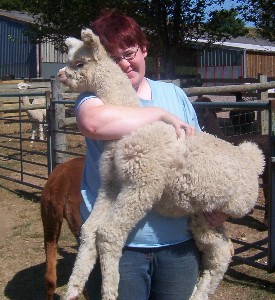
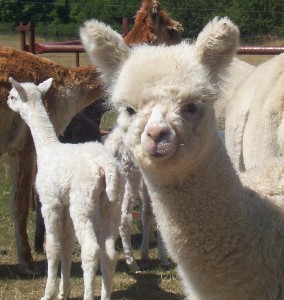 Alpacas are quite gentle, and don't mind human contact once they get to know you. They also travel well in the back of vehicles! Also, unlike other domestic animals, they tend to pick a spot in the field and deposit their poop only there, so they're quite clean. 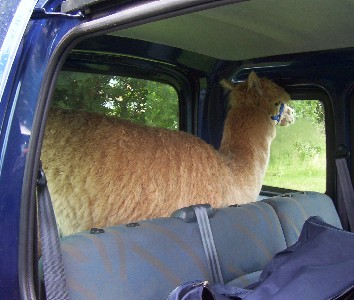
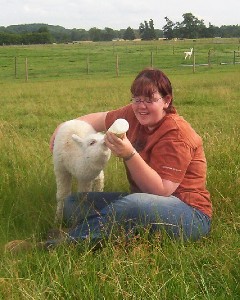 Jesse took lots of pictures of alpacas, as well as other people and places she's visited in England and Europe. 

|
